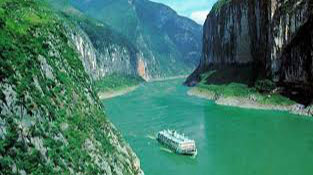China has many world natural heritage sites, among them Shennongjia (神农架) and Gaoligong Mountain (高黎贡山) are particularly unique. Shennongjia is located in Hubei and is known as the “roof of central China”. It is famous for its alpine Azalea flower, glacial landforms and rich flora and fauna biomass. It is an important ecological gemstone in the middle reach of Yangtze River. Gaoligong Mountain in Yunnan is part of the Three Parallel Rivers (三江并流). It is also a wide refuge for flora and fauna, forming a rich biodiversity area known as a “paradise on earth”. These heritage sites not only show the beauty of nature, but also reflect the outstanding ecological protection by the country.
- – China Yellow (Bohai) Sea Migratory Bird Habitat (Jiangsu): the world’s largest intertidal wetland, an important habitat for many migratory birds.
- -Sanqingshan (三清山) National Park (Jiangxi): famous for the combination of granite peak forest and Taoist culture, known as the “No. 1 Fairy Mountain in the World”.
- -China Danxia (丹霞, six provinces together): mainly red sandstone landforms, including Guangdong Danxia Mountain, Guizhou Chishui (赤水) and other places.
- -South China Karst (Yunnan, Guizhou, Guangxi and Chongqing): including Yunnan Shilin (石林), Guizhou Libo (荔波) and Chongqing Wulong (武隆), showing the typical characteristics of karst landforms.
- – Hubei Shennongjia (神农架, Hubei): famous for its alpine ecosystem and rare animals and plants, known as the “roof of central China”.
- -Wulingyuan (武陵源) Scenic Spot (Hunan): famous for its quartz sandstone peak forest landform “Zhangjiajie (张家界) landform”, with the reputation of “three thousand strange peaks and eight hundred beautiful waters”.
- – Badain Jaran (巴丹吉林) Desert-Sand Mountain Lake Group (Gansu): famous for the unique landscape coexisting of sand mountains and lakes, showing the ecological diversity of the arid areas
- – Qinghai Hoh Xil (可可西里, Qinghai): the world’s largest plateau wetland, a paradise for rare animals like the Tibetan antelope.
- – Xinjiang Tianshan Mountain (Xinjiang): famous for its glaciers, snow-capped peaks and grassland landscapes, showing a typical mountain ecosystem.
- – Fanjing Mountain (梵净山, Guizhou): dominated by rare animals and plants such as the Guizhou golden monkey and Davidia involucrata (珙桐, a spece of pine), with unique natural wonders such as cloud waterfalls and Buddha’s light.
- -Sichuan Giant Panda Habitat (Sichuan): the world’s largest and most complete giant panda habitat, covering Wolong (卧龙), Siguniang Mountain (四姑娘山) and other areas.
- -Huanglong Scenic Area (黄龙, Sichuan): It is famous for its calcified colorful pools, snow-capped mountains and canyons. It is the only intact plateau wetland in China.
- -Jiuzhaigou (九寨沟) Scenic Area (Sichuan): It is famous for its alpine lakes, waterfalls, colorful forests and snow-capped mountains, and is known as the “fairy tale world”.
- -Chengjiang (澄江) Fossil Site (Yunnan): well-preserved early Cambrian marine paleontological fossils, known as the “paleontological holy land”.
- -Yunnan Three Parallel Rivers Conservation Area (Yunnan): Jinsha River, Lancang River and Nujiang River run parallel, rich in biodiversity, known as the “world biological gene bank”.




